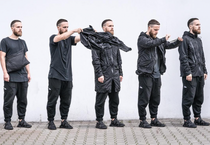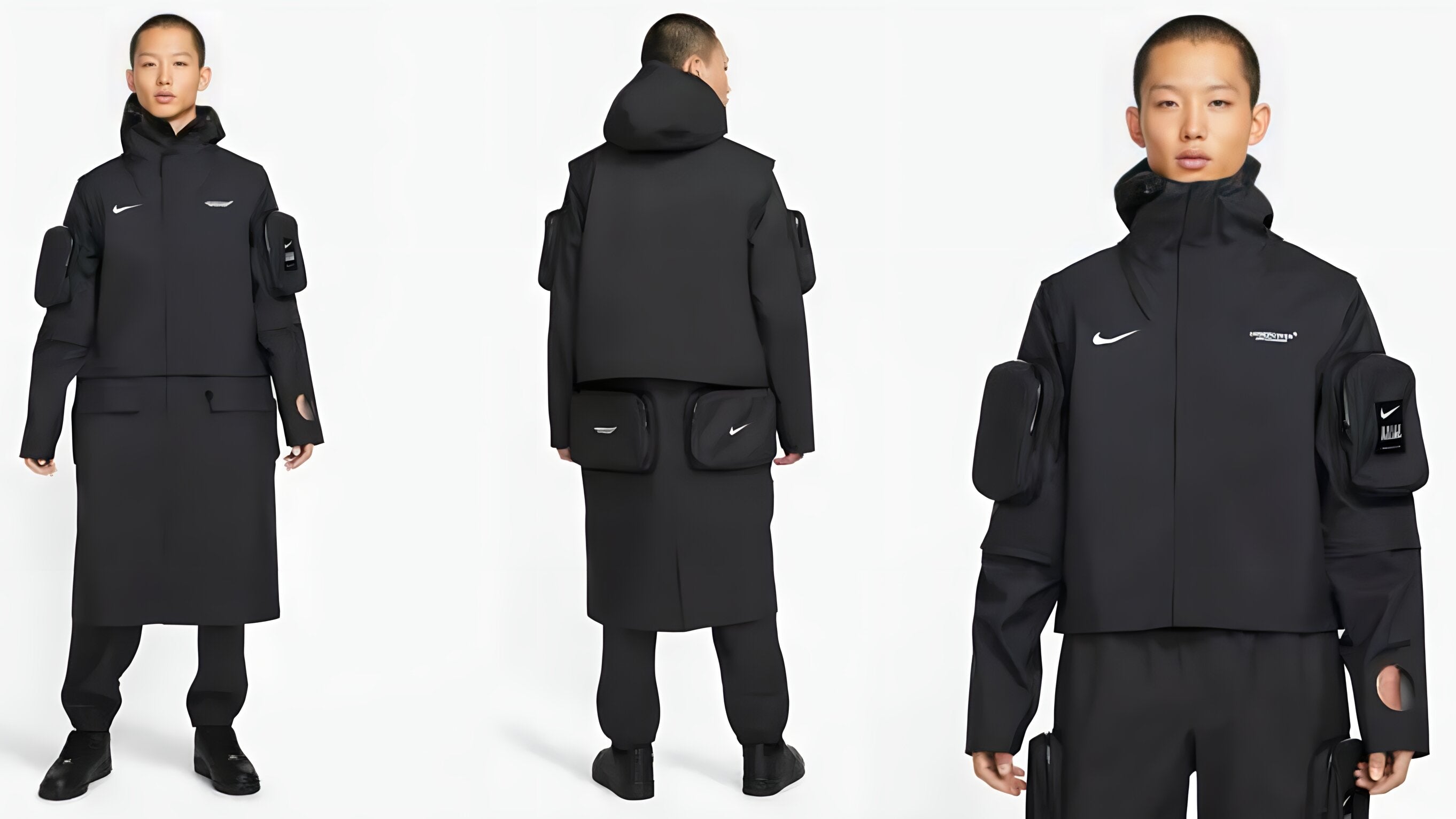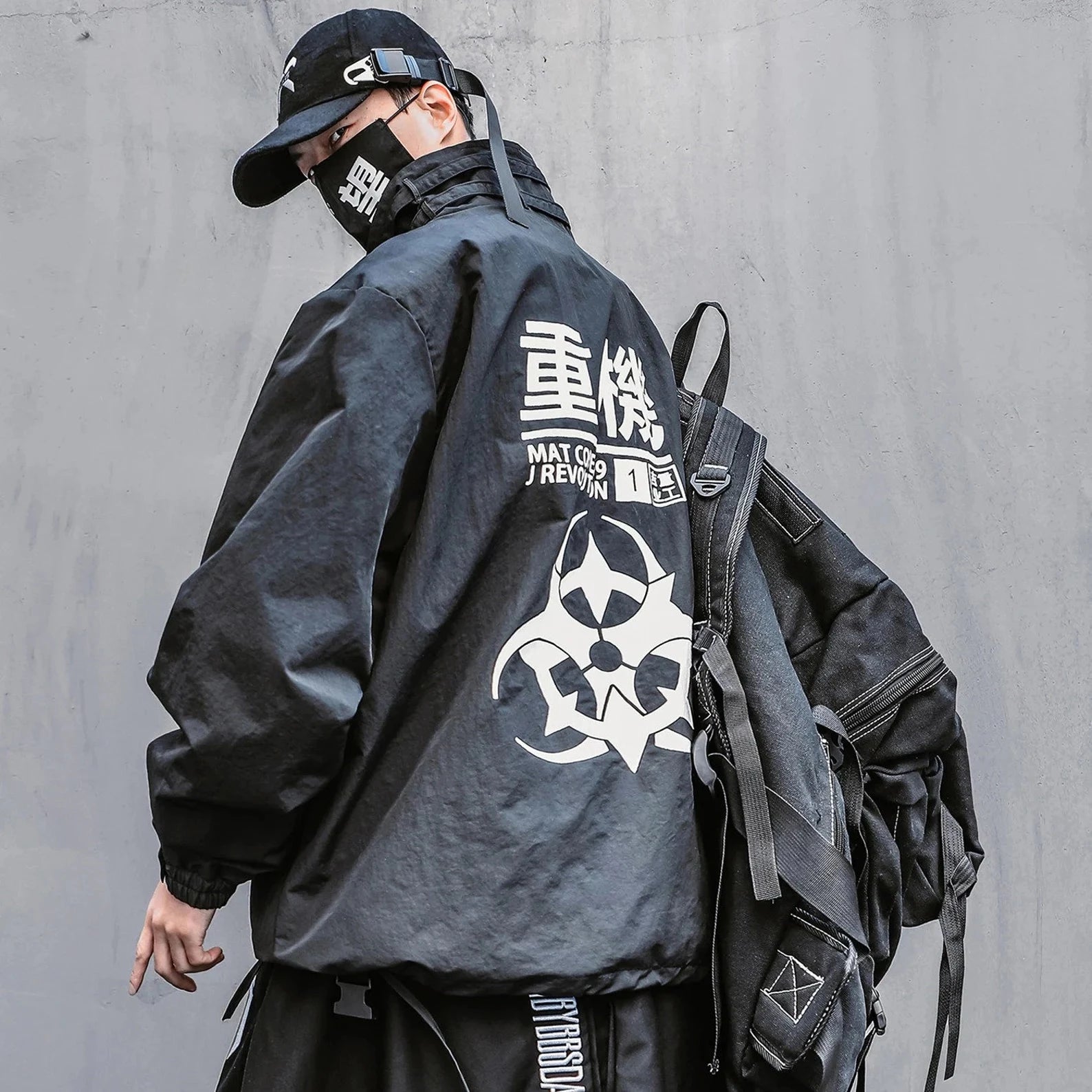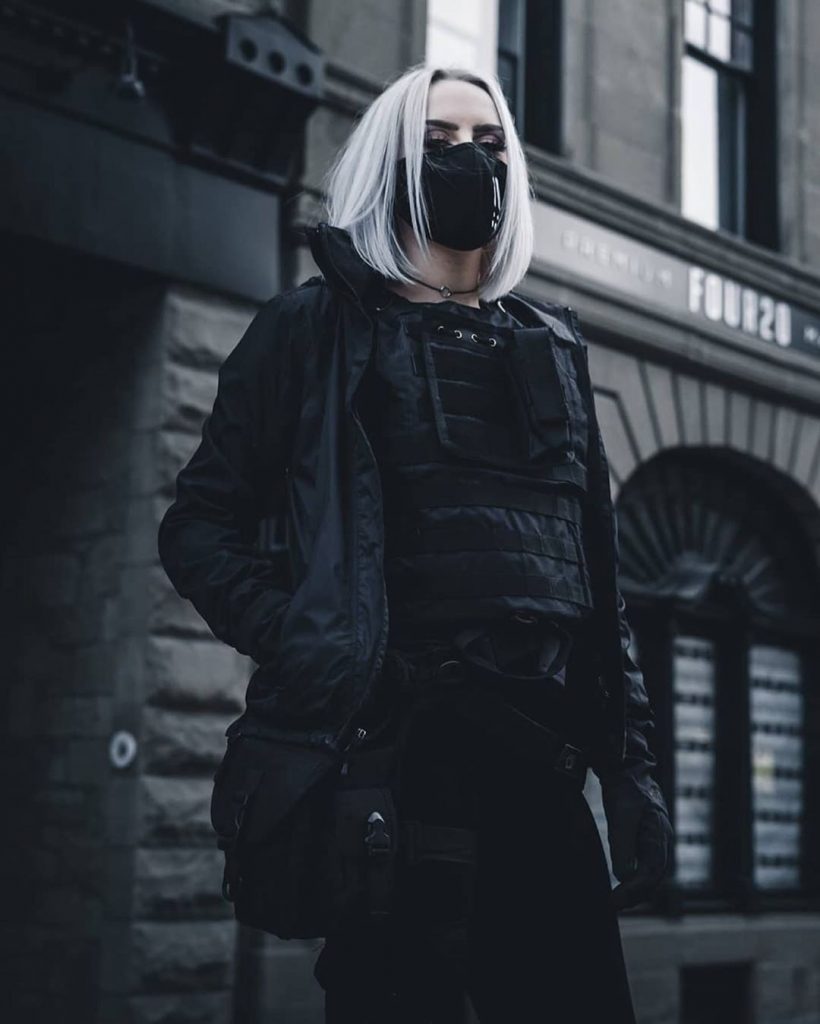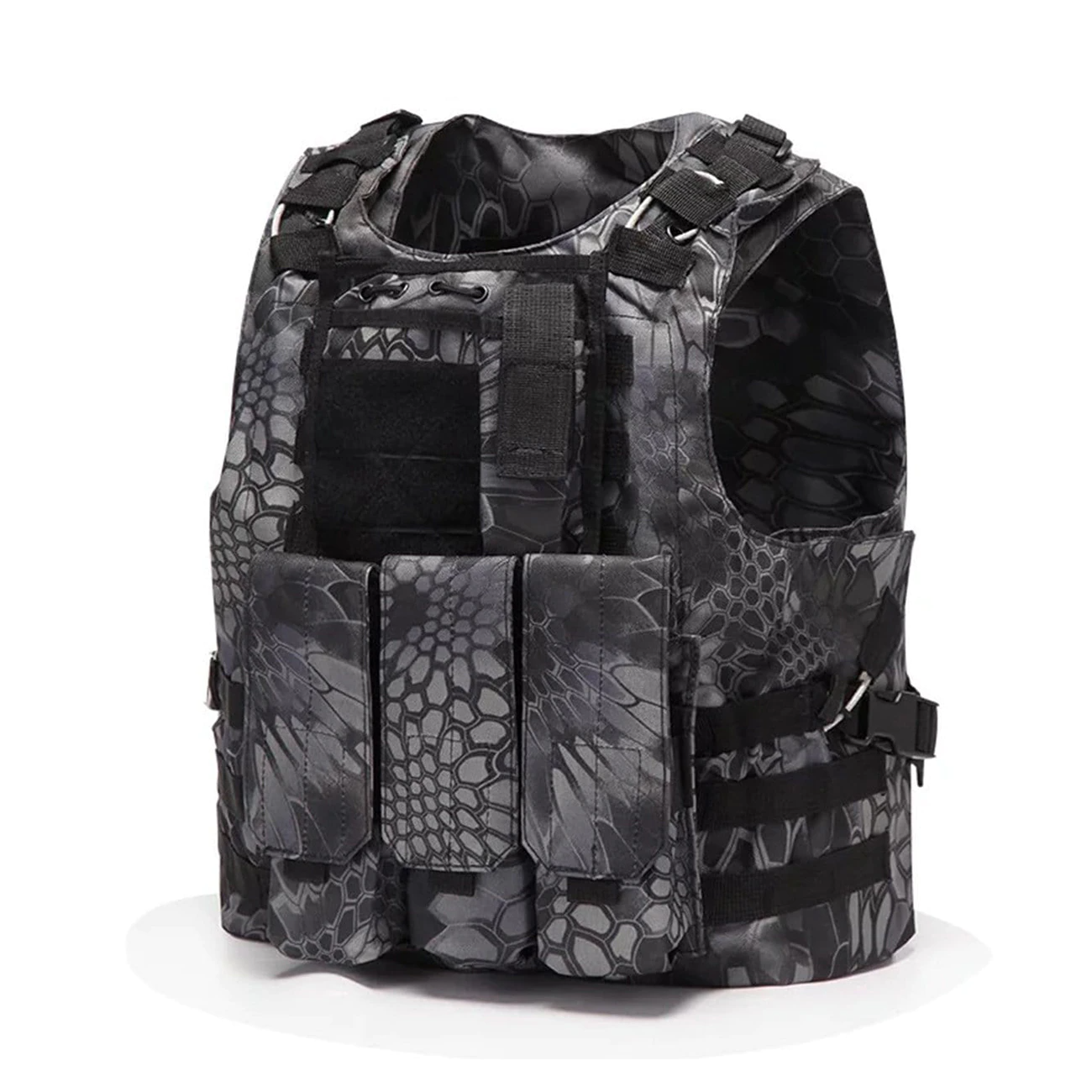Modular clothing is a design approach incorporating detachable or adaptable elements, allowing garments to be customized. This innovative concept improves durability by offering several styles and features from a single piece.
Some use 'multifunctional', while others prefer 'convertible' or 'adaptable'. Semantics may vary, but conceptually, modular fashion refers to a clothing, shoe, or accessory that changes shape for different uses.
Award-winning startup Petit Pli deploys the principles of origami to create garments that can expand or contract to accommodate different body sizes.
According to an article published in Business Insider, people, on average, bought 60% more garments in 2014 compared to 2000, and this only keeps rising.
That's why sustainability is at the heart of the avant-garde concept of modularity; reducing the need for numerous items decreases clothing waste and supports eco-friendly practices.
Beyond aesthetics, modularity is a testament to functional fashion, integrating innovative design with practical utility.
In addition to my industry knowledge, I have a deep passion for sustainable and versatile fashion.
I've seen the impact of fast fashion on the environment, and I believe that modular clothing is an important step in the fight against this impact. My dedication to this cause is not just professional; it's personal, too.
This article unravels the captivating world of transformable clothing, from detachable sleeves to transformable styles.
You'll learn about its numerous benefits, the innovative brands leading the charge, and how this approach stitches a new narrative in the techwear clothing sector.
Alright, done with the appetizer! Ready for the main course on modular fashion?
What is Modularity in Fashion?
Modular Clothing Definition
A modular garment can be disassembled into different parts, or modules, and reassembled as the wearer wishes. This is usually done using a variety of fastenings, from buttons and zips to snaps and Velcro.
These fasteners allow optional accessories such as collars, hoods and pockets to be attached or detached to transform one type of garment into another, such as trousers that can become shorts thanks to detachable leg bottoms.
It allows wearers to create different styles, lengths or overall appearance to suit changing fashions or needs.
The multi-functional design goes beyond traditional fashion norms, introducing an extended life cycle for garments by allowing alterations without needing a complete wardrobe overhaul.
A Brief History of Modular Design

Although seemingly modern, modular clothing has roots that go back several decades. It emerged as a response to the ever-changing needs of a society that demanded versatility, utility and adaptability in its clothing.
In the mid-twentieth century, the world began to glimpse what was to become the modular fashion movement.
Inspired by societal changes and technological advances, designers began experimenting with adaptable garments that could be worn for various occasions without needing multiple clothes. This period was marked by rapid urbanization and an increase in global travel.
The idea of having clothes that could move from one environment to another without compromising style or functionality was very appealing.
Brands and designers in the 1960s and 1970s played with the concept of detachable elements, from skirts that could be transformed into trousers to jackets with removable sleeves.
These early forays into modular design were more than just fashion statements; they reflected a broader societal trend that leaned towards minimalism, efficiency and sustainability.
The 1990s and early 2000s saw the explosion of fast fashion, which, while affordable and varied, raised concerns about sustainability, environmental impact and the ethics of disposable culture.
During this period, modular clothing began to emerge as an antithesis to the wasteful practices of the fashion industry. People began to recognize the value of investing in quality pieces that offered adaptability and an extended life cycle.
Today, with the collective move towards sustainable practices and the growing value placed on versatile, durable products, modular clothing is at the forefront of fashion innovation and continues to evolve and inspire future generations.
Benefits of Modular Clothing

Modular fashion seems to be enjoying a resurgence of interest, along with concepts such as circularity and fitting technology, which are key to shaping a more responsible future for the industry, the environment, and the ecosystems at its mercy.
Fashion Benefits
Owning modular garments offers:
-
A cost-effective approach over time as clothes can be easily adapted.
-
Versatility: One garment, such as a jacket, can take multiple forms be mixed and matched to create different styles.
-
Detachable sleeves, pockets, and other small parts enhance functionality.
-
Modularity offers a transformative approach to clothes, enabling a wardrobe that can adjust to seasons, occasions, and personal style changes.
-
Travel Convenience: Packing becomes efficient with clothes that can transform based on need
-
Modular clothing adds sophistication to the wearer's look
If modularity in fashion speaks to you, we suggest you begin with staple items that offer multiple detachable parts. For instance, jackets with detachable sleeves or pants that can transform into shorts.
Styling Tips: Mix and match different elements to create unique styles. A jacket from Orbitgear might pair well with pants from Riot Division.
Outfit Ideas: Seek inspiration from the leading brands we will mention later in the article. Understand how they envision modular clothing and adapt it to your style.
Sustainability
In line with the "buy less, buy better, make it last" proposition, modular fashion meets the criteria of sustainable consumption, while a multi-purpose product should also appeal to the value-conscious customer.
The conventional fashion industry has long been under scrutiny for its environmental repercussions.
However, modular clothing, focusing on reusability and reduced waste, stands out as a beacon of sustainable fashion.
Modular clothing minimizes the environmental toll by promoting a circular economy's ethos, marking a significant departure from wasteful fast fashion models.
According to the Ellen MacArthur Foundation, the circular economy is "based on eliminating waste and pollution, maintaining products and materials in use, and regenerating natural systems".
Modular design can make it easier to repair garments to give them greater longevity by replacing a torn sleeve rather than throwing the garment away by following this principle of keeping products and materials in use.
In terms of regenerating natural systems, washing the garment can be limited to stained areas, reducing wear and saving water, and eliminating waste and pollution means using less detergent and reducing the amount of waste by reducing the number of garment lines.
Circle Economy's value hill model shows how keeping clothes in circulation for longer retains value.
Techwear, already renowned for its innovative and functional designs, finds a natural ally in modular clothing. Some techwear brands, like Konundrum or Orbitgear, are at the forefront, intertwining techwear's aesthetic with modular adaptability.
Top Modular Clothing Brands in 2024
Konundrum

KONUNDRUM is an emerging German label founded in 2020 by Jan-Philipp Kosfeld and Annika Langhammer, which puts modularity at the forefront of its design process.
Customers can choose from a range of specially designed outerwear and, in effect, develop their clothing system to suit their needs and the conditions they face.
A standout product emblematic of Konundrum's modular approach is their "Transformable Trench Coat."
Riot Division

Riot Divison is a Ukrainian techwear brand founded in 2010 Kyiv by Oleh Moroz.
The brand is a vanguard in the techwear industry and is celebrated for its unwavering commitment to modular clothing. It seamlessly converges form and function, crafting garments that offer the wearer a dynamic range of styles and practical configurations.
Orbitgear
Created by Indonesian designer Yos Santoso, Orbitgear merges traditional craftsmanship with innovative materials to create technical jackets and modular bags.
It is a renowned name in the techwear landscape and has carved a niche with its specialized focus on modular clothing, exuding a futuristic aesthetic and offering multifunctional features.

This commitment to modularity means wearers can customize and adapt their Orbitgear items to suit varying needs and preferences while maintaining a cohesive and avant-garde look.
Their signature products are modular backpacks with multiple attachment points and pockets, allowing users to modify and optimize storage based on their specific requirements.
Mission Workshop

MW was launched by American duo Bart Kyzar and Mark Falvain in 2009 in San Francisco. It specializes in high-performance urban apparel.
The brand's design philosophy revolves around creating resilient and adaptable products, echoing the dynamic needs of urban adventurers and daily commuters alike.
One of Mission Workshop's signature offerings that showcases its modular expertise is "The Radian" travel pack.
This intricately designed backpack boasts a sleek aesthetic and is engineered with a customizable internal structure, allowing users to tailor the pack's layout to fit their specific needs, be it for daily use or extended travel.
Modular Techwear
In the techwear clothing scene, modularity emerges as a pioneering solution that harmoniously blends fashion with sustainability.
Embracing the modular design principle, techwear champions versatility, allowing futuristic clothing enthusiasts to adapt their outfits with detachable or adaptable elements seamlessly.
This allows wearers to craft different styles and align with sustainable practices, challenging the fast fashion norm.
The extended life cycle of these transformable garments means less clothing waste, endorsing a circular economy ethos.
For techwear aficionados, modular fashion represents the future: a perfect synthesis of cutting-edge style, adaptability, and a conscious step towards eco-friendly fashion choices.
If you like futuristic pieces that can change shape and adapt to your needs, we suggest you take a look at our Ninja Kimono
Challenges and Criticisms of Modular Fashion
You might think that everyone would agree that modularity in mode offers nothing but advantages, but that's not the case.
Its detractors put forward arguments such as:
-
Cost concerns: Initial investments in modular garments might be higher than regular fashion items. However, the extended life cycle of these pieces offers long-term value.
-
Limited style options: Some critics argue that modular fashion can restrict style. Yet, this concern is being addressed progressively with the rise of brands and designers embracing modularity.
-
Maintenance: Keeping track of detachable parts can be challenging, but organizing and storing them systematically can alleviate this concern.
-
People who buy modular fashion do it for self-interest, not for the planet's sake.
“Customers are not going to change behavior or adapt to modularity unless it saves them money or makes life easier, like the zip or Velcro or press studs,” said Karin Gustafsson, design director at COS.
Wrapping up:
As we come to a close on our exploration of modular clothing in the fashion world and especially in the techwear universe, it's evident that this fashion trend is more than just a fleeting moment.
It redefines how we perceive, purchase, and utilize clothing. As leading brands continue to innovate, consumers stand to benefit from the fusion of quality, versatility, and conscience.
With the seamless blend of function, sustainability, and style, modularity is a testament to what the future of fashion can and perhaps should be.
The horizon looks promising.
Modular Clothing FAQs
What is a modular wardrobe?
A collection of clothing where each piece is designed to be compatible and interchangeable with others, allowing for a wider variety of outfits with fewer garments. You can start building your supermodern wardrobe at a reasonable price in our techwear store.
What is the modular design process?
It begins with identifying core functionalities, designing individual modules for each, and then ensuring they integrate smoothly, allowing for easy customization and adaptability.


















